snow
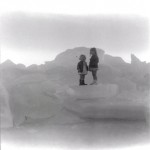
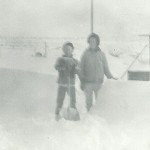 Every year, I dread the beginning of winter. It doesn’t matter how late it starts, I still wish it was over the minute it begins. I know that many people would say, why do you live where you do, and to that I say…it is where I have always lived…or at least since I was three years old. Before that, up until I was three years old, I lived in Superior, Wisconsin, and I must say that the weather there would have been worse than the winters here, so I have moved to a better place…sort of. Don’t get me wrong…I love Wyoming. It is my home, and in the fall, spring, and summer, I am perfectly happy here. I would just love to eliminate winter all together. I can’t say that I always felt that way about winter, because as a kid, I probably didn’t. I think our parents had no trouble getting my sisters and me to go outside and make snowmen, or snow angels, or build a fort and have a snowball fight. It’s what kids do. In reality it seems like winter bothers us more and more, the older we get. Even my sister, Cheryl Masterson, who loves winter, really has no true desire to be out in it. She likes the beauty of it and the coolness of the air, but shoveling snow or driving in snow…not so much.
Every year, I dread the beginning of winter. It doesn’t matter how late it starts, I still wish it was over the minute it begins. I know that many people would say, why do you live where you do, and to that I say…it is where I have always lived…or at least since I was three years old. Before that, up until I was three years old, I lived in Superior, Wisconsin, and I must say that the weather there would have been worse than the winters here, so I have moved to a better place…sort of. Don’t get me wrong…I love Wyoming. It is my home, and in the fall, spring, and summer, I am perfectly happy here. I would just love to eliminate winter all together. I can’t say that I always felt that way about winter, because as a kid, I probably didn’t. I think our parents had no trouble getting my sisters and me to go outside and make snowmen, or snow angels, or build a fort and have a snowball fight. It’s what kids do. In reality it seems like winter bothers us more and more, the older we get. Even my sister, Cheryl Masterson, who loves winter, really has no true desire to be out in it. She likes the beauty of it and the coolness of the air, but shoveling snow or driving in snow…not so much.
I guess it is a good thing that our lives have seasons too, because if they didn’t, I doubt if anyone would ever do those fun things that kids do in winter. If we all felt the way I do about winter right now, I suppose we would move to a different place every six months or so. That, of course is the snowbird stage of life, except that it would be something that happened much more often, and that is what I would be, were it not for my obligations here. For me, there is a love/hate relationship with the changing seasons. When spring rolls around, I will start to feel alive again, just like the flowers, trees, and birds. My heart sings as the warmer weather approaches, and I feel like hibernating during the colder months. The odd thing too, is that I love winter scenes…in pictures, but in reality, I have no desire to be there…just to look, and then to go out in the warm summer weather I truly love.
Perhaps I need to consider what the difference was when I was a child, and I really did like going out into the snowy weather. Was it that I didn’t mind the cold, or that I didn’t mind dressing for it? Is it that I have 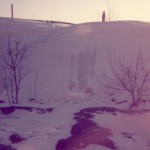
 forgotten how to play? Probably, that is it. In fact the last time I can say that I really played was when my grandchildren were little. I think it would be great if I could travel back in time those 15 or so years to when I would gladly have gone out in the snow with my grandchildren, because…well, I would do just about anything for them. I suppose that even then I can’t say I loved the cold, but I did have a great time playing with those grandchildren…even if it was cold. I can’t go back in time, so here I am at the beginning of another winter. The snow has arrived, the cold is here…and so it begins.
forgotten how to play? Probably, that is it. In fact the last time I can say that I really played was when my grandchildren were little. I think it would be great if I could travel back in time those 15 or so years to when I would gladly have gone out in the snow with my grandchildren, because…well, I would do just about anything for them. I suppose that even then I can’t say I loved the cold, but I did have a great time playing with those grandchildren…even if it was cold. I can’t go back in time, so here I am at the beginning of another winter. The snow has arrived, the cold is here…and so it begins.
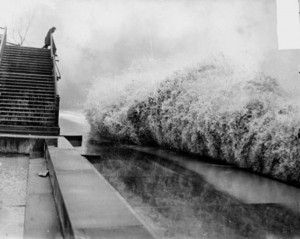 When we think of hurricanes, we think of the ocean, but on November 7, 1913, there was a storm over the Great Lakes that would go down in United States history as the largest inland maritime disaster, in terms of number of ships lost. The storm was nicknamed the White Hurricane. The storm system brought blizzard conditions to areas all around the Great Lakes, with hurricane force winds. The nature of the storm was unique and powerful, and caught even the most seasoned captain by surprise. Two low pressure centers merged and rapidly intensified over the Lake Huron, with periods of storm-force winds occurring over a four day period. Surrounding ports signaled it was a level-four storm, but for some vessels, it was already too late. Major ship wrecks took place on all the Great Lakes except for Lake Ontario. Vessels at that time could withstand 90 mile per hour winds and 35 foot waves, but it was the whiteout conditions and accumulation of ice on the ships that turned an already dangerous situation into a deadly one. Ship captains were unable to maintain navigation, resulting in 12 shipwrecks, 19 ships stranded, and an estimated 250 lives lost. On land, 24 inches of snow shut down traffic and communication, causing millions of dollars in damage.
When we think of hurricanes, we think of the ocean, but on November 7, 1913, there was a storm over the Great Lakes that would go down in United States history as the largest inland maritime disaster, in terms of number of ships lost. The storm was nicknamed the White Hurricane. The storm system brought blizzard conditions to areas all around the Great Lakes, with hurricane force winds. The nature of the storm was unique and powerful, and caught even the most seasoned captain by surprise. Two low pressure centers merged and rapidly intensified over the Lake Huron, with periods of storm-force winds occurring over a four day period. Surrounding ports signaled it was a level-four storm, but for some vessels, it was already too late. Major ship wrecks took place on all the Great Lakes except for Lake Ontario. Vessels at that time could withstand 90 mile per hour winds and 35 foot waves, but it was the whiteout conditions and accumulation of ice on the ships that turned an already dangerous situation into a deadly one. Ship captains were unable to maintain navigation, resulting in 12 shipwrecks, 19 ships stranded, and an estimated 250 lives lost. On land, 24 inches of snow shut down traffic and communication, causing millions of dollars in damage.
The storm took place before the time when weather forecasters had the luxury of computer models, the detailed surface and upper air observations, weather satellites, or radar needed to make the most accurate predictions. Had weather forecasters then been able to access modern forecasting equipment, they may have been able to determine the likely development of this type of storm system in advance, as they did with Superstorm Sandy in 2012. As part of the forecast for Sandy forecasters were able to predict storm force winds over the lower Great Lakes five days in advance. The technology and forecast models available to forecasters today led to a more accurate forecast which saved mariners, recreational boaters, and businesses millions, as they were able to make preparations in advance of Sandy’s storm force winds and near 20 foot waves.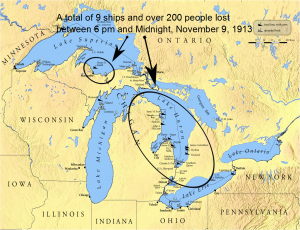
One hundred years later, the National Oceanic and Atmospheric Administration, in the Great Lakes is commemorating the Storm of 1913, not only for the pivotal role it played in the history of the Great Lakes, but also for its enduring influence. Modern systems of shipping communication, weather prediction, and storm preparedness have all been fundamentally shaped by the events of November 1913. It’s strange to think that one storm could make such a lasting impact on so many systems, but then it is the need for something better that spurs great inventive minds to invent a solution to a serious problem.
The National Oceanic and Atmospheric Administration plays a major role in protecting maritime relics of the past. Included are many of the ships lost in 1913. They have remained preserved deep below the surface of the Great Lakes. The National Oceanic and Atmospheric Administration’s Thunder Bay National Marine Sanctuary is a 48-square-mile area of protected territory with one of America’s best preserved and nationally significant collections of shipwrecks. Located in northwestern Lake Huron, Thunder Bay is adjacent to one of the most treacherous stretches of water within the Great Lakes system. Unpredictable weather, murky fog banks, sudden gales, and rocky shoals earned the area the name “Shipwreck Alley.” To date, more than 50 shipwrecks have been discovered within the sanctuary including the Isaac M. Scott, a 504 foot steel freighter lost in the storm of 1913.
This storm holds an interest for me, because at that time in history, my grandparents, Allen and Anna Spencer were living in the Great Lakes area. My grandfather was not part of the crew of any ship, and so any effect to them would have come in the form of very deep snow. My Aunt Laura would have been just 16 months old at 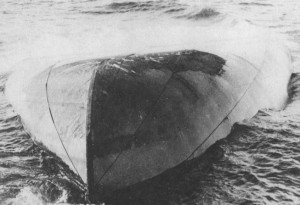 the time. I’m sure that the thought of being stranded in her home, was not a pleasant one for my grandmother, considering Aunt Laura’s very young age, but they survived the White Hurricane, as did most other people, at least those on land anyway. It still seems incredible to me that a storm of that magnitude could have brewed in an inland setting, but then anyone who knows the Great Lakes will tell you that they are so big that they might just as well be considered a sea. The November Gales have long been known as killers, especially over Lake Superior, the largest of the Great Lakes. I’m glad that modern weather forecasting equipment had at least lessened the possibility of ships and lives being lost in the Great Lakes, as well as the oceans.
the time. I’m sure that the thought of being stranded in her home, was not a pleasant one for my grandmother, considering Aunt Laura’s very young age, but they survived the White Hurricane, as did most other people, at least those on land anyway. It still seems incredible to me that a storm of that magnitude could have brewed in an inland setting, but then anyone who knows the Great Lakes will tell you that they are so big that they might just as well be considered a sea. The November Gales have long been known as killers, especially over Lake Superior, the largest of the Great Lakes. I’m glad that modern weather forecasting equipment had at least lessened the possibility of ships and lives being lost in the Great Lakes, as well as the oceans.
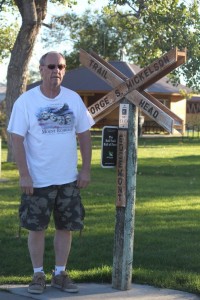
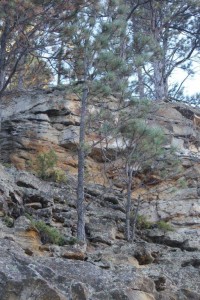 Over the years of my childhood, my dad, Allen Spencer would tell my sisters and me a story about his walk to and from school as a kid. He always said that he and his siblings, Bill and Ruth had to walk five miles through the snow to get to school, and it was uphill both ways. Of course, my sisters and I didn’t believe Dad’s stories…then. And my sisters still might not believe it, but I’m here to tell you that there are certain conditions in which such a journey might actually be uphill both ways, or at least seem like it.
Over the years of my childhood, my dad, Allen Spencer would tell my sisters and me a story about his walk to and from school as a kid. He always said that he and his siblings, Bill and Ruth had to walk five miles through the snow to get to school, and it was uphill both ways. Of course, my sisters and I didn’t believe Dad’s stories…then. And my sisters still might not believe it, but I’m here to tell you that there are certain conditions in which such a journey might actually be uphill both ways, or at least seem like it.
On Saturday, Bob and I headed up to Hot Springs, South Dakota to do some hiking. Our plan was to finish the last 13 miles (26 miles, since we would hike out and back, thereby doing the 13 miles twice) of the Mickelson Trail. The Mickelson Trail is 109 miles one way, and with this last leg of the hike, we will have hiked the entire trail twice, for a total of 218 miles, because of the walk out and back.
Saturday turned out to be the hottest day of the three days we hiked…well over 80. To top it off, we didn’t get started until 1:30 pm, because of our drive over. Well into the heat of the day. We were hiking a five mile stretch, or ten miles total. As we walked, we were thankful that since we were going uphill the whole way over, we would be going down hill the on the way back…or so we thought. It was very hot all day, and several times we thought the trail ahead looked like a down hill slope, only to find that it was not. As the day grew hotter, we started back…noticing as we did, that we were still going uphill. My thoughts drifted back to all those times when my dad had told us his famous story about walking those 5 miles to school on the snow, uphill both ways. I think I now understand that while it couldn’t have been uphill both ways, to a kid walking to school, it could certainly seem like it was uphill both ways. Our hike on Saturday, couldn’t have been uphill both ways either, but somehow in the heat of the day, the trail caused an optical illusion that made it seem like it was uphill on the way over, when in fact it 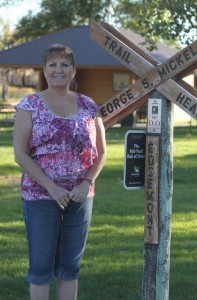
 was downhill a good portion of it. Now we were faced with an unexpected uphill hike back.
was downhill a good portion of it. Now we were faced with an unexpected uphill hike back.
The hike Sunday and the one today were far more pleasant, and the really good news is that as of 10:00 this morning, Bob and I can say that we have hiked the entire Mickelson Trail, from Edgemont to Deadwood…twice. It is a wonderful feeling of accomplishment that we have today. It took us a few years…about 15, I would say, but since we don’t live in the area, that’s not too bad. There were beautiful sections, where we walked for hours through the trees, and boring times, when we found ourselves hiking along the highway, but all in all it was a great journey. Would I do it again? Hmmmm, maybe some sections. Others…well, I don’t think so. Nevertheless, if there was another trail like it, I might consider it. Call me crazy.
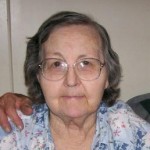
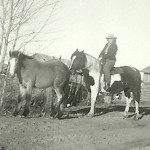 I don’t know if it was because Bob and I had been on vacation or what exactly, but when we went to visit my mother-in-law, Joann Schulenberg, she decided that she had been on vacation too. Her travels took her to San Francisco and to Oregon before finally arriving in Butte, Montana. I don’t know why she chose these particular destinations for her travels, but it is my guess that she thought she had traveled, because we told her that we had been in the Black Hills this past week. When my father-in-law, Walt Schulenberg retired, they did a bit of traveling. They liked to winter in Yuma, Arizona, and then drive to Winnemucca, Nevada to visit her sister Linda Cole and her husband, Bobby. Then, they would drive up the coast to Klamath Falls, Oregon to visit his sister, Esther Hein and her significant other, Keith Leistikaw. I suppose they would have very likely driven through Butte, Montana on their way to Forsyth, Montana to visit family in that area.
I don’t know if it was because Bob and I had been on vacation or what exactly, but when we went to visit my mother-in-law, Joann Schulenberg, she decided that she had been on vacation too. Her travels took her to San Francisco and to Oregon before finally arriving in Butte, Montana. I don’t know why she chose these particular destinations for her travels, but it is my guess that she thought she had traveled, because we told her that we had been in the Black Hills this past week. When my father-in-law, Walt Schulenberg retired, they did a bit of traveling. They liked to winter in Yuma, Arizona, and then drive to Winnemucca, Nevada to visit her sister Linda Cole and her husband, Bobby. Then, they would drive up the coast to Klamath Falls, Oregon to visit his sister, Esther Hein and her significant other, Keith Leistikaw. I suppose they would have very likely driven through Butte, Montana on their way to Forsyth, Montana to visit family in that area.
It’s hard to say for sure what things trigger my mother-in-law’s past memories to come back to her so vividly, when at other times, she doesn’t really recall them much at all. I suppose it is just the way Alzheimer’s Disease works. Sometimes the memories are there and pretty clear, and other times they are just gone. For that reason, you enjoy the memories when she has them. It is always a surprise. Unexpected, and yet always fun. When the memories come, they come with clarity, so I get a glimpse into what her life was like at that time. It’s also at times like these, that I’m thankful for the research I’ve put into her life for the different stories I have written about her, because that has enabled me to converse with her on things she remembers too.
As our time with her went on, she noticed that the clouds had begun to roll in a bit, because there was a chance of rain. But since she didn’t know what month we are in, she said it looked like it might snow. We all told her that since it was the middle of July, it most likely was not going to snow. She was not convinced, however, because as she put it, “When I was out riding my horse earlier, it was snowing.” She said it in such a 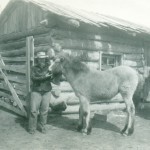
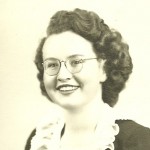 matter of fact way, that I knew she would not be convinced otherwise, so I changed the subject to her horses. We talked of Molly and Pie Face…her colt, of Danny and Twinkles, and of course, Bing. For her, it was like just yesterday that she last saw her beloved horses, because like her mom and dad, Nettie and Bob Knox…who passed in the 1980s, her husband, Walt…who passed in 2013, and her daughter, Marlyce Schulenberg…who passed in 1989, her horses are not gone. They are just at home, outside, or in the corral. They live right there, in her world, and there they will remain for as long as she lives.
matter of fact way, that I knew she would not be convinced otherwise, so I changed the subject to her horses. We talked of Molly and Pie Face…her colt, of Danny and Twinkles, and of course, Bing. For her, it was like just yesterday that she last saw her beloved horses, because like her mom and dad, Nettie and Bob Knox…who passed in the 1980s, her husband, Walt…who passed in 2013, and her daughter, Marlyce Schulenberg…who passed in 1989, her horses are not gone. They are just at home, outside, or in the corral. They live right there, in her world, and there they will remain for as long as she lives.
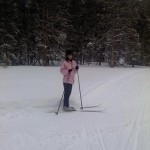
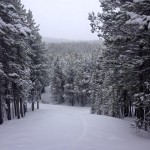 After a recent storm dumped eight to twelve inches of snow on the Casper area, I noticed just how beautiful the white blanket was, as I looked across the grounds of the nursing home where my mother-in-law lives. Not being much of a winter person, I can’t say that I always appreciate the white stuff, and in all reality, I do hope that storm was Winter’s Last Hoorah for the year, but whether it is or it isn’t, on this particular day, it looked very pretty to me. A thought came to me that maybe I should take a walk through the snow with my camera because there might be some beautiful sights to see, but we were on our way in to visit my mother-in-law, so I did not go for that walk. Nevertheless, the picture of that white blanket of snow has stayed in my mind.
After a recent storm dumped eight to twelve inches of snow on the Casper area, I noticed just how beautiful the white blanket was, as I looked across the grounds of the nursing home where my mother-in-law lives. Not being much of a winter person, I can’t say that I always appreciate the white stuff, and in all reality, I do hope that storm was Winter’s Last Hoorah for the year, but whether it is or it isn’t, on this particular day, it looked very pretty to me. A thought came to me that maybe I should take a walk through the snow with my camera because there might be some beautiful sights to see, but we were on our way in to visit my mother-in-law, so I did not go for that walk. Nevertheless, the picture of that white blanket of snow has stayed in my mind.
Some people love all the different seasons, and they get out and do different things to enjoy each of them, but I usually prefer to snuggle up wrapped in a warm blanket and watch a good television show or movie on those cold winter nights, and not do as my sister-in-law, Jennifer Parmely, or her son Barry Schulenberg and his wife, Kelli do, which is to get out and ski or snowshoe through the winter scenes. I do, however, enjoy looking at the pictures they post about those activities. I guess I am more of a Norman Rockwell or Thomas Kinkade type of winter person. I’ll take a beautiful snow scene on a card or picture over the real thing any day, because while a card or picture leaves you with a warm, cozy feeling, the real thing is inevitably cold, blustery, and most generally just not fun.
Still, on that day, I felt just a slight tug…almost a desire to walk through the snow, just to see where it took me, and what beautiful scenes it lead me to. I have a feeling now, that if I had gone on that walk, I would have been somewhat disappointed. It’s hard for a summer person to actually experience that cozy feeling when they actually get out in that blustery cold. Somehow, the coziness is lost in winter’s cold, snowy air. It’s funny how something so cold, can look so pretty though. I think that if there is snow in Heaven, I’ll have to ask that it somehow feel warm…at least to me. I suppose that some people, like my sister, Cheryl Masterson will feel just the opposite, but I’m sure God can work it out to suit both of us just fine.
Nevertheless, on that day, and with that particular snow storm, I could picture in my mind’s eye just how 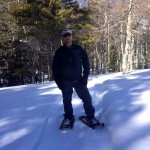
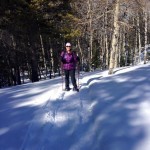 beautiful it would be to take a solitary walk through the cold, snowy park in the moonlight. I could picture the moon’s light creating snow diamonds across the pristine snow. I could imagine that I didn’t feel cold at all, but rather that a cozy feeling prevailed over the evening. I could even picture a deer quietly walking in front of me, seemingly not afraid at all. And maybe I could even picture the two of us walking through the snow in quiet, peaceful harmony. At least, that was what I could picture in my mind’s eye, even if the reality would have been very, very different.
beautiful it would be to take a solitary walk through the cold, snowy park in the moonlight. I could picture the moon’s light creating snow diamonds across the pristine snow. I could imagine that I didn’t feel cold at all, but rather that a cozy feeling prevailed over the evening. I could even picture a deer quietly walking in front of me, seemingly not afraid at all. And maybe I could even picture the two of us walking through the snow in quiet, peaceful harmony. At least, that was what I could picture in my mind’s eye, even if the reality would have been very, very different.
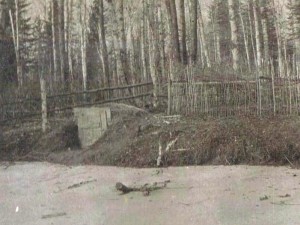 Years ago, long before refrigeration was safe to use, most people had a more primitive way to keep foods fresh or frozen. I say that this was before refrigeration was safe to use, because mechanical refrigeration was actually invented in 1748 by William Cullen and was demonstrated at the University of Glasgow. This version was not used for any practical purpose, however. In 1805, an American inventor named Oliver Evans designed the first refrigeration machine, and the first person to make a practical refrigerating machine was Jacob Perkins in 1834, using Ether in a vapor compression cycle. American physician, John Gorrie, built a refrigerator based on Oliver Evans’ design in 1844 which he used to make ice to cool the air for his yellow fever patients. German engineer Carl von Linden, patented not a refrigerator but the process of liquefying gas in 1876 that is part of basic refrigeration technology. Refrigerators in the late 1800s and up until 1929 used toxic gasses, such as ammonia, methyl chloride, and sulfur dioxide as refrigerants, which were responsible for several fatal accidents in the 1920s. I suppose the cost and the dangers of these early models were the main reasons that people continued to used the old fashioned version.
Years ago, long before refrigeration was safe to use, most people had a more primitive way to keep foods fresh or frozen. I say that this was before refrigeration was safe to use, because mechanical refrigeration was actually invented in 1748 by William Cullen and was demonstrated at the University of Glasgow. This version was not used for any practical purpose, however. In 1805, an American inventor named Oliver Evans designed the first refrigeration machine, and the first person to make a practical refrigerating machine was Jacob Perkins in 1834, using Ether in a vapor compression cycle. American physician, John Gorrie, built a refrigerator based on Oliver Evans’ design in 1844 which he used to make ice to cool the air for his yellow fever patients. German engineer Carl von Linden, patented not a refrigerator but the process of liquefying gas in 1876 that is part of basic refrigeration technology. Refrigerators in the late 1800s and up until 1929 used toxic gasses, such as ammonia, methyl chloride, and sulfur dioxide as refrigerants, which were responsible for several fatal accidents in the 1920s. I suppose the cost and the dangers of these early models were the main reasons that people continued to used the old fashioned version.
The old fashioned way to keep foods fresh or frozen, involved using ice and snow, which they would bring in from the mountains, or use what was on the ground, if it was available. They would dig a cellar in the ground, 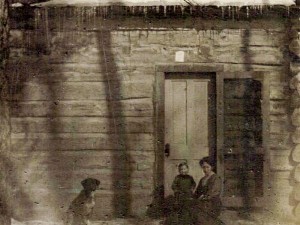 and line it with wood or straw. Then they packed it with snow and ice, and the food was placed in the cellar. It was this type of refrigeration system that my grandparents, Allen and Anna Spencer, were using at the time my Aunt Laura Fredrick was a very little girl in about 1913. My grandparents were living in a wooded area in northern Minnesota near American Falls. Grandpa was working in the lumber business at that time.
and line it with wood or straw. Then they packed it with snow and ice, and the food was placed in the cellar. It was this type of refrigeration system that my grandparents, Allen and Anna Spencer, were using at the time my Aunt Laura Fredrick was a very little girl in about 1913. My grandparents were living in a wooded area in northern Minnesota near American Falls. Grandpa was working in the lumber business at that time.
According to my Uncle Bill Spencer, who was their second child, the cellar was probably not needed much in the long winter months, because the house stayed pretty cold up there anyway. I’m sure that they had wood for a fire, but then again, I suppose that everything they burned, was something that could not bring in money. Also, they lived in a log cabin, that was apparently not very well built, or at least the spaces in between the logs were not really well packed with mud to keep the cold winter air on the outside of the house, where it belonged.
I’m not sure how far the cellar was from the house, because, I can’t see the house in the picture, so it might have been a little way from the house, or the picture might have been taken from the house. Either way, getting food from the cellar was a bit of a process, because you don’t want to upset the cooling process by removing the straw too often, as it was part of what kept the ice and snow from melting.
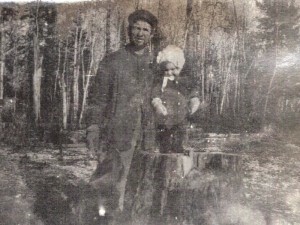 I can’t say when my grandparents got their first real refrigerator, but I expect that like many people of that time, they were a little bit leery of the early refrigerators, after hearing about people dying because the gasses leaked out of the unit. I suppose it was the price people paid to be able to use some of the early inventions, but many people felt that the price was too high, so they waited until these new fangled gadgets were proven safe before they took a chance on them. And, I’m sure that like any new thing, they were pretty expensive early on too. The cellar would work just fine for now, and therefore, that is what my grandparents were using at that time in our family history. These days, we would be shocked at such a method of keeping food fresh.
I can’t say when my grandparents got their first real refrigerator, but I expect that like many people of that time, they were a little bit leery of the early refrigerators, after hearing about people dying because the gasses leaked out of the unit. I suppose it was the price people paid to be able to use some of the early inventions, but many people felt that the price was too high, so they waited until these new fangled gadgets were proven safe before they took a chance on them. And, I’m sure that like any new thing, they were pretty expensive early on too. The cellar would work just fine for now, and therefore, that is what my grandparents were using at that time in our family history. These days, we would be shocked at such a method of keeping food fresh.
 My nephew, Barry Schulenberg’s wife, Kelli is a summer girl. Winter is simply not her style. I can relate to that, because if you are the kind of person who loves to get outdoors and do some hiking, winter really cramps your style. Most summer girls don’t snow ski, ice skate, or snow mobile, because those things require cold weather. Even if you dress warmly…it just isn’t enough. A summer girl loves the warm weather. The heat goes clear to your bones and after the long winter, and even the early spring…you are finally warm. The thing that probably surprises me the most is that while Kelli is a summer girl, she has never lived anywhere but in the north, and at least for now, that doesn’t look like it will change soon.
My nephew, Barry Schulenberg’s wife, Kelli is a summer girl. Winter is simply not her style. I can relate to that, because if you are the kind of person who loves to get outdoors and do some hiking, winter really cramps your style. Most summer girls don’t snow ski, ice skate, or snow mobile, because those things require cold weather. Even if you dress warmly…it just isn’t enough. A summer girl loves the warm weather. The heat goes clear to your bones and after the long winter, and even the early spring…you are finally warm. The thing that probably surprises me the most is that while Kelli is a summer girl, she has never lived anywhere but in the north, and at least for now, that doesn’t look like it will change soon.
I suppose that there are a lot of things that are harder to do in the winter. It can be rather cold riding horses or bicycles. Even driving a car is no fun in winter’s snow. Slick roads make driving treacherous, especially when 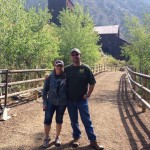 you live in the country, as Kelli and Barry do. Kelli, especially doesn’t like driving on slick roads, and so she often rides into town with Barry, so she doesn’t have to drive the roads herself. I can understand that, because Bob and I used to live in the area they do. It is something I can’t say that I miss in the slightest.
you live in the country, as Kelli and Barry do. Kelli, especially doesn’t like driving on slick roads, and so she often rides into town with Barry, so she doesn’t have to drive the roads herself. I can understand that, because Bob and I used to live in the area they do. It is something I can’t say that I miss in the slightest.
For Kelli and Barry, summer means travel and concerts. Their weekends, during the summer months, often include day drives to Colorado, just to look at the beautiful scenery, and do a little shopping at their favorite stores. I can relate to that too, because while I don’t care much for shopping or concerts, I love nice long drives and beautiful scenery. Being nature girls, probably makes us both feel the same way about the scenic drives you can find in the Rocky Mountain area. Wyoming and Colorado are both filled with mountain scenes and lots of rivers and creeks. Camping and hiking can be done in so many places in the Rocky Mountains. Barry and Kelli have been to a number of them too.
Kelli loves animals too, especially their dog, Dakota, and donkeys, which she doesn’t own any of yet, but given 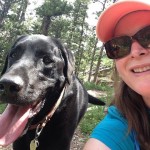 time, I think she just might someday. That was one of the reasons they bought a place out in the country, and while this place didn’t turn out to be exactly what they had hoped for, in time it will either become what they want or they will find a different place that will provide what is needed to fulfill their dreams.
time, I think she just might someday. That was one of the reasons they bought a place out in the country, and while this place didn’t turn out to be exactly what they had hoped for, in time it will either become what they want or they will find a different place that will provide what is needed to fulfill their dreams.
As winter approaches, I’m sure Kelli will be staying at home more, doing her nesting. She loves her home and works hard to make it pretty…with a western flair. Staying home and reading or getting on Facebook and Twitter are favorite pastimes of Kelli’s…when she can’t be outside hiking or riding her bicycle that is. Today is Kelli’s birthday. Happy birthday Kelli!! Have a great day!! We love you!!
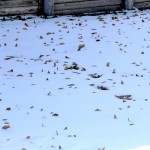 With the Indian Summer we had this year, came a late fall…which collided with winter the other day. Usually winter snow and leaves still on the trees, spells disaster for the trees, but not this time. The weather had cooled down enough to where many if the trees were bare, and those that weren’t, had a lot less leaves than last year when we got an early storm that broke many of our trees. This frigid cold weather, and the subsiquent storm, brought snow that was much more of the powder variety, and maybe that’s why the few trees that had leaves on them were able to stand against the snow.
With the Indian Summer we had this year, came a late fall…which collided with winter the other day. Usually winter snow and leaves still on the trees, spells disaster for the trees, but not this time. The weather had cooled down enough to where many if the trees were bare, and those that weren’t, had a lot less leaves than last year when we got an early storm that broke many of our trees. This frigid cold weather, and the subsiquent storm, brought snow that was much more of the powder variety, and maybe that’s why the few trees that had leaves on them were able to stand against the snow.
The thing that makes this storm so unusual is that with most snow storms here, the leaves have either been raked up and disposed of, or they are under the snow. Not so this storm. Because we had an abundance of leaves still lingering on the trees, the wind that followed the storm, deposited them on top of the snow on the ground.
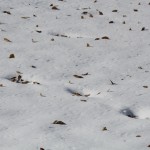
As I was looking out the window this morning, I noticed that there was a trail of leaves running across my lawn. The snow was slightly melted around them, creating…well, leaf tracks. I know that makes no sense, and that most likely, an animal walked across our yard, leaving the tracks. The problem with that thought is that the tracks really didn’t go anywhere. If an animal had gone across the yard, it was either very careful to back track in the same foot prints it had made, or it left the yard by some way that I couldn’t see. All I could see was leaves in every one of the imprints. As far as I’m concerned, those are leaf tracks.
You can think what you like, and you can even wonder what goofy thing I will think of next. I can’t say, because I don’t set out to dream this up, it just hits me that way. I have deer in my yard all the time, as well as cats, dogs, and even raccoons, so it could be that one of those made the tracks, but I like the idea of leaf tracks. It lends a little bit of something special to the scene I saw.
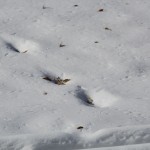
It’s funny that the snow can melt in such a way as to create something that really can’t happen and makes no sense anyway, but it does. Maybe it had the help of the leaves laying across it in such a way that it looked like a trail, or maybe it’s all in my imagination, but either way, I like the effect. There they are, leaf tracks surrounded by snow diamonds. It’s such a pretty sight, and it puts a smile on my face in an otherwise dreary day. Maybe my analogy is silly, but sometimes we need a little silliness in our lives and I think leaf tracks works perfectly. So the next time you see leaves on top of the snow, look carefully to see if any of them left their tracks across the snow, and you too might be pleasantly surprised by leaf tracks.
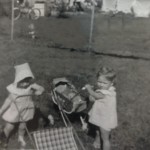 For most children, their first friends are their siblings or cousins. Their families get together, so the kids get to see each other often. The days flow from one to another, and for a time, everyone expects that nothing will change. I suppose that is why change always hits us so hard. We have convinced ourselves that it will never happen. Then comes the day when one of those first friends moves away. For some people it doesn’t happen until a sibling moves out of the house for the first time, but for others, as was the case for my sister, Cheryl Spencer Masterson and our cousin, Pam Spencer Wendling, it can come at a very young age, and it can feel quite devastating, for everyone involved.
For most children, their first friends are their siblings or cousins. Their families get together, so the kids get to see each other often. The days flow from one to another, and for a time, everyone expects that nothing will change. I suppose that is why change always hits us so hard. We have convinced ourselves that it will never happen. Then comes the day when one of those first friends moves away. For some people it doesn’t happen until a sibling moves out of the house for the first time, but for others, as was the case for my sister, Cheryl Spencer Masterson and our cousin, Pam Spencer Wendling, it can come at a very young age, and it can feel quite devastating, for everyone involved.
So often, the two friends only hear one side of how the two of them are feeling. I know that my sister missed Pam a lot. I don’t recall my own feelings concerning the matter, but then I was only two and a half, so that isn’t surprising. In reality, it was Cheryl and Pam who played together every day, and who were so close. They 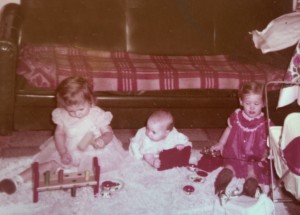 did everything together. It didn’t matter if the day was warm or cold. They were outside playing in the snow or taking care of their baby dolls in the warm sun. It was so cute.
did everything together. It didn’t matter if the day was warm or cold. They were outside playing in the snow or taking care of their baby dolls in the warm sun. It was so cute.
Recently, on our visit to Wisconsin, Pam was telling us about a baby album she had with lots of those early childhood pictures in it. They included Pam and Cheryl, and me too, but there were several of the two little friends going about their daily play. It was so obvious that these two cousins loved each other very much. Our two families lived just across the yard from each other, and since the alley ran along the side of the house, the two yards shared a common fence. In those days, you could let your kids go outside to play with a lot less supervision and worry, so Cheryl and Pam were outside playing together all the time. It was the perfect setup…until all that changed.
In November of 1958, our family moved from Superior, Wisconsin back to my mom’s hometown of Casper, Wyoming. As I said, I was really too little to understand how much Cheryl missed Pam, and until this trip, we 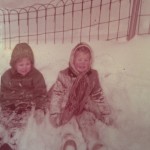 hadn’t heard just how much Pam missed Cheryl. Apparently, Pam must have asked her mom why she couldn’t go play with Cheryl, and was told that the family had moved to Wyoming. I’m not really sure where the discussion about trees came into the whole thing, but somehow Pam associated the move with trees. That is odd, because I would have to say that there are a lot more trees in Wisconsin than in Wyoming, but Pam didn’t understand that. She just knew that the move made her sad, and there had to be a reason…in her mind anyway. When that subject came up, Pam cried and said, “Cheryl’s Wyoming has trees!!” Maybe she thought that was why we moved, or maybe she just thought that everything must be better in Wyoming, but whatever the reason, she knew in her heart that Cheryl’s Wyoming had trees.
hadn’t heard just how much Pam missed Cheryl. Apparently, Pam must have asked her mom why she couldn’t go play with Cheryl, and was told that the family had moved to Wyoming. I’m not really sure where the discussion about trees came into the whole thing, but somehow Pam associated the move with trees. That is odd, because I would have to say that there are a lot more trees in Wisconsin than in Wyoming, but Pam didn’t understand that. She just knew that the move made her sad, and there had to be a reason…in her mind anyway. When that subject came up, Pam cried and said, “Cheryl’s Wyoming has trees!!” Maybe she thought that was why we moved, or maybe she just thought that everything must be better in Wyoming, but whatever the reason, she knew in her heart that Cheryl’s Wyoming had trees.
 Kids have always had a fascination with animals. Any animal will do, but pets don’t seem to fall into the same category as other animals. I suppose that the reason for that is that after a little bit of time with a pet, they become normal everyday parts of the family. It doesn’t mean the child doesn’t love the pet, because they do, but the pet is an animal they see everyday, often in the house, so it’s nothing special. Farm animals, on the other hand are something different. Here is an animal that isn’t a domesticated pet, and yet it isn’t afraid of people either. They understand that they need people to bring them their food and water, and they also understand that people aren’t usually scary. Yes, the animal could hurt a child, especially if it stepped on the child, but for the most part the animal is as curious about the child as the child is about the animal.
Kids have always had a fascination with animals. Any animal will do, but pets don’t seem to fall into the same category as other animals. I suppose that the reason for that is that after a little bit of time with a pet, they become normal everyday parts of the family. It doesn’t mean the child doesn’t love the pet, because they do, but the pet is an animal they see everyday, often in the house, so it’s nothing special. Farm animals, on the other hand are something different. Here is an animal that isn’t a domesticated pet, and yet it isn’t afraid of people either. They understand that they need people to bring them their food and water, and they also understand that people aren’t usually scary. Yes, the animal could hurt a child, especially if it stepped on the child, but for the most part the animal is as curious about the child as the child is about the animal.
As small children, my dad and his siblings lived on a farm, so being around farm animals was a part of life. Still, that did not stop the curiosity about those animals from forming in their minds. When they went out to play, a part of their time outside always seemed to be spent visiting the other residents of their home. They would trek out to the haystacks where the cows would be feeding, and watch those strong, yet gentle animals eat, while the cows watched these tiny versions of the people who cared for them watching them. Funny how we all teach our kids not to stare, but when put in a situation like this, all that rudeness doesn’t seem to matter. Both sides are staring anyway, and since it isn’t a person…it just doesn’t matter. I suppose in many ways the whole situation was a lot like the petting zoos that most city children have been to as their only real interaction with farm animals.
When my girls were little, we too had a little place out in the country, and we raised a cow now and them. The girls were quite curious and really wanted to help with our cow. I had to be careful what they helped with, because when it came to grain…our cows always became pigs, and a tiny little girl could get trampled in the cows effort to get to what the cows considered candy. Most of the time the cows were a gentle as they could be, but the grain had to be given in a certain way, and very quickly, because they couldn’t wait to get to it. One cow we had named Rosie, due to her red color, was so excited that she was trying to follow me and still scratch her belly too. The end result was one good, but unintended kick to the back of my knee. It left a knot that stayed with me for the better part of 6 months. It was a good thing for Rosie that I liked her, and it wasn’t butchering time, or she would have been on our table in a matter of days.
Hay was always a very different matter. Little kids could be around cows eating hay, and there 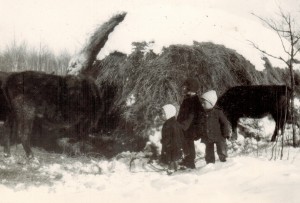 was not a dangerous rush to the food. I suppose that was the vegetables of the whole deal, and we all know how kids, which is what cows are a lot like when it comes to food, are with vegetables. The girls loved to help put the hay in the feeding troths for the cows, and then sit and watch them eat. I suppose it was an interesting sight. If you have never watched a cow eat, you might not know it, but they really are strange when they eat. I suppose that is why Aunt Ruth, Uncle Bill, and my dad were just standing there, out by the haystack when they could have been playing in the snow, just watching the cows eat.
was not a dangerous rush to the food. I suppose that was the vegetables of the whole deal, and we all know how kids, which is what cows are a lot like when it comes to food, are with vegetables. The girls loved to help put the hay in the feeding troths for the cows, and then sit and watch them eat. I suppose it was an interesting sight. If you have never watched a cow eat, you might not know it, but they really are strange when they eat. I suppose that is why Aunt Ruth, Uncle Bill, and my dad were just standing there, out by the haystack when they could have been playing in the snow, just watching the cows eat.

